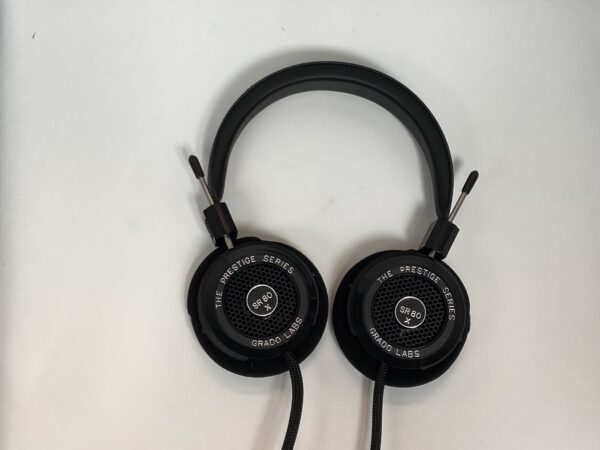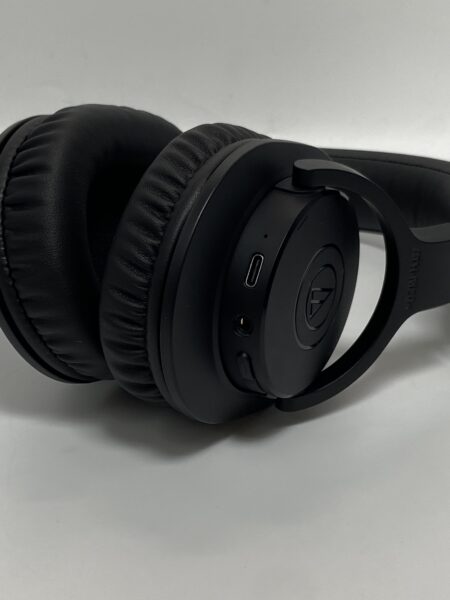Open Back vs Closed Back Headphones: Which Should I Buy?
by Jim Bates
(Updated )
Bookmark this article
Copy to clipboard
Email to a Friend

Headphones can be a daunting world to navigate, especially with so many options and styles out there to choose from. One of the biggest distinguishing factors between headphones is whether they're open or closed-back. While the difference in design is simple, the difference in sound and usage is a bit more complicated. I'm here to demystify these differences and assure that you get the best headphones for your lifestyle.
What are Open-Back Headphones?

Open-back headphones have an ear cup design that allows air and sound to pass through and "breathe". In terms of sound, this makes them typically sound airier and have a better high-end response, since the lows and acoustic resonances can dissipate outside of the headphone rather than reflect inside of the enclosure. The soundstage on them usually feels wider and more natural, and oftentimes they allow more details to come through in the mix. The main caveat of the open-back design is that, since sound can escape, that also means it can come in. This means that you won't get much outside noise isolation, and anybody around you will be able to hear what you're listening to. This limits the open-back design to quiet listening environments, as well as making them unusable for recording. That being said, open-backs excel in ideal conditions, with many people swearing by them. I know several Mix engineers who prefer to use open-backs and some of the best-sounding headphones I've ever used are open-backs.
See our selection of Open-Back Headphones
What are Closed-Back Headphones?

Closed-Back Headphones are headphones with a sealed ear cup design, meaning the sound is only directed towards your ear. Closed-backs are much more common than open-backs, and you typically see most headphones defaulting to this design. The main advantage of Closed-backs is that it has superior sound isolation, both from the outside and the inside. This makes them useful for louder environments, recording, and environments where you may not want others to hear what you're listening to. The main drawbacks are that you might lose some of the sound advantages that come with the open-back design. Because the sound has nowhere to travel other than the ear cup's enclosure, the acoustic character of the headphone's housing can affect the sound. Many manufacturers mitigate this by designing the enclosure to work harmoniously with the drivers. In terms of sound, closed-backs typically have a more focused and energetic sound, usually with a beefier low end. While the sound profile is ultimately up to preference, I know many people who prefer closed-backs for their sound.
See our selection of Closed-Back Headphones
What about Semi-Open Back Headphones?
Semi-Open Back Headphones are an attempt at getting the best of both worlds. While they are technically "open," they typically only allow a small amount of sound to vent from the housing, rather than having the entire back earcup exposed. While these have the most variance and exist largely on a spectrum, they typically have the advantages and disadvantages of both designs, but to a lesser degree. You might still get some outside noise on these, but not nearly as much as fully-open headphones. Conversely, you'll have some of the airiness and detail of open-back headphones, but to a lesser degree. These hybrid designs are the most varied and worth testing.
So which is better?
Neither (and both). Headphones are tools that have their uses, and there isn't one style or model that reigns supreme. You wouldn't use a hammer when you need a drill, the same way you wouldn't use Open-Backs on a crowded subway. If you do more selective listening in a quiet environment, then I'd highly suggest trying open-backs. If you need sound isolation or more privacy, then I would stick to closed-backs. That being said, you can use either anywhere and for anything, but your results may vary.
Get the Latest Headphone News and Reviews in Your Inbox
Subscribe to our newsletter and get 10% off your first purchase!*
*some restrictions may apply


 FREE
FREE 


